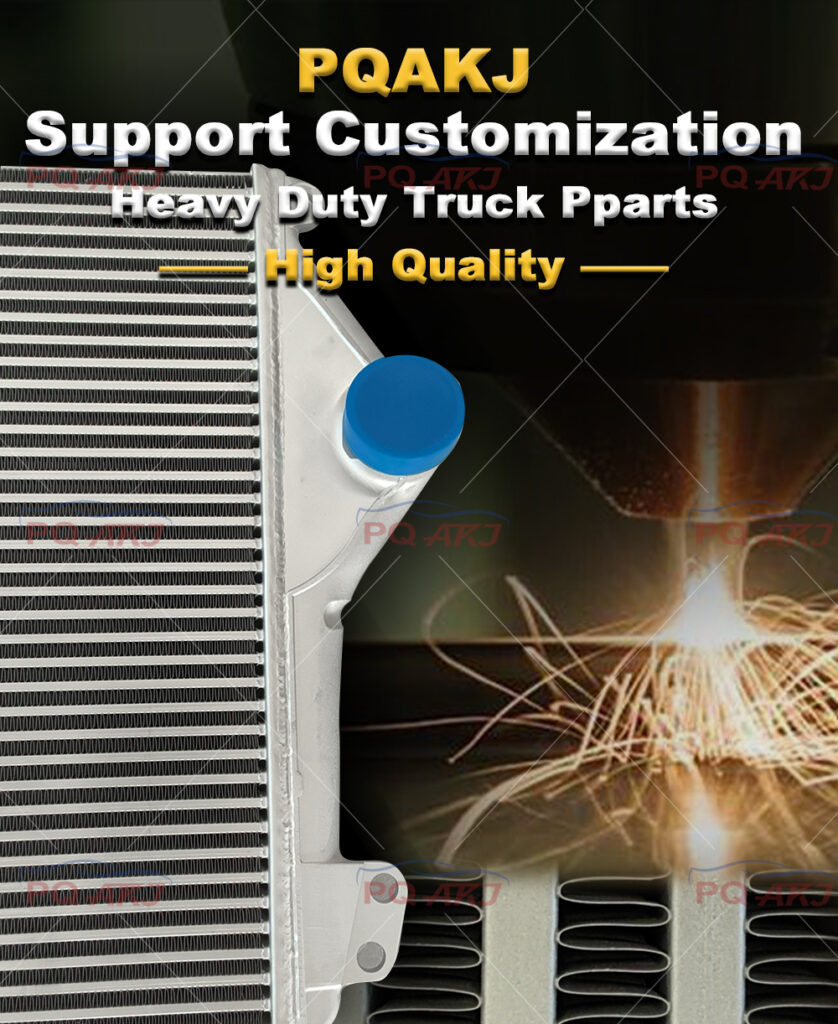PQAKJ supports customization, research and development of intercoolers for mid-to-high-end cars, trucks, and buses.
Welcome to contact us: safenna@pgakj.com
Intercooler play a crucial role in engine systems by reducing the intake air temperature, improving combustion efficiency, and increasing power output. This article provides an overview of different types of intercooler, namely air cooling and water cooling, along with their design principles, material selection, and size optimization.
Types of Intercoolers:
Air Cooling Intercooler:
Air cooling intercooler are the most commonly used type, working on the principle of cooling the intake air using external air. The design principles of air cooling intercooler include the following:
Inlet and Outlet: Air cooling intercooler have an inlet to receive hot compressed air and an outlet to deliver cooled air to the engine.
Baffles and Cooling Fins: Baffles are used to direct the airflow towards the cooling fins, which increase the surface area for heat dissipation into the surrounding air.
Cooling Fan: Some air cooling intercooler are equipped with a cooling fan to enhance airflow and cooling efficiency.
Material Selection and Size Optimization for Air Cooling Intercooler:
Material Selection: Air cooling intercooler typically use aluminum alloys due to their excellent thermal conductivity and lightweight properties.
Size Optimization: The size of air cooling intercooler should be optimized based on the engine’s power requirements and available installation space. Increasing the size of cooling fins and the cooling fan can enhance heat dissipation but may also increase airflow resistance.
Water Cooling Intercooler:
Water cooling intercooler employ water as the cooling medium to reduce the intake air temperature. The design principles of water cooling intercoolers include the following:
Water Tank and Pump: Water cooling intercooler consist of a water tank for storing coolant and a pump for circulating water flow.
Cooling Core: The cooling core of water cooling intercoolers typically consists of multiple small tubes, through which the coolant flows to absorb heat.
Fans and Radiators: Water cooling intercooler often incorporate fans and radiators. After the coolant passes through the cooling core, the fans push the cooled water into the radiator, where heat is dissipated through the airflow.
Material Selection and Size Optimization for Water Cooling Intercooler:
Material Selection: The cooling cores of water cooling intercoolers are usually made of copper or aluminum due to their high thermal conductivity.
Size Optimization: Similar to air cooling intercoolers, size optimization for water cooling intercoolers should consider the engine’s power requirements and cooling capacity. Increasing the cooling core’s surface area and fan size can improve heat dissipation, but installation space and water flow resistance must also be considered.
Intercoolers are critical components in engine systems, and two common types are air cooling and water cooling intercoolers. Air cooling intercoolers cool the intake air using external air, while water cooling intercoolers utilize circulating water flow. Design principles, material selection, and size optimization are essential for both types to effectively reduce intake air temperature and enhance engine performance. By selecting appropriate materials and optimizing size, intercoolers can contribute to improved combustion efficiency and increased power output in various applications.

